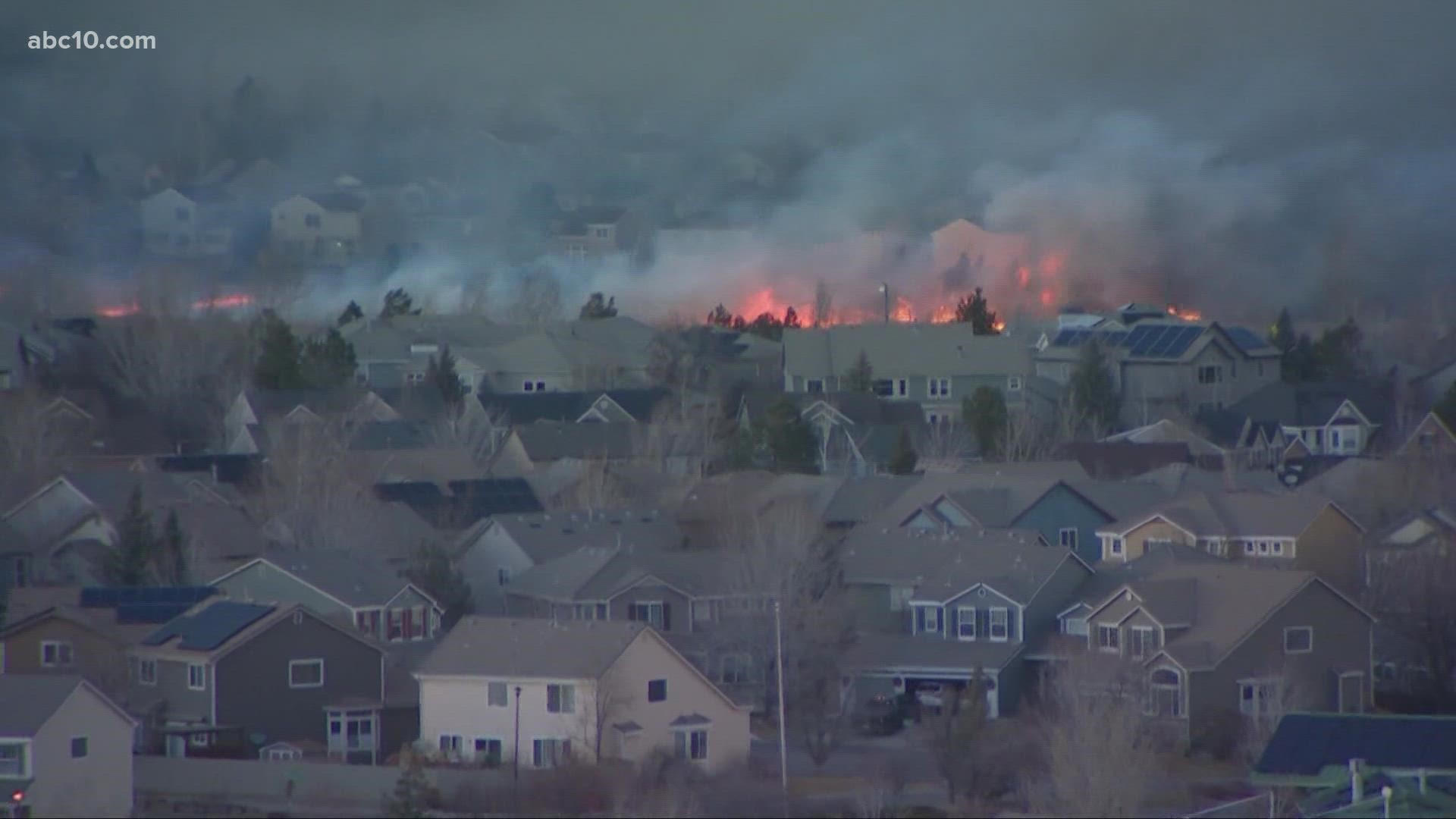SACRAMENTO, Calif — Burning hundreds of Colorado homes just after Christmas, the Marshall Fire wasn’t a wildfire. It was a town fire.
The main fuel came from the houses themselves.
As much as people might imagine great city fires to be a thing of the past, experts have been warning for years now that the phenomenon is back.
“The scary thing is that we're having communities burn down now, people who didn't even think they were at any fire risk,” fire researcher Hugh Safford said. “That is an urban fire problem.”
RELATED:
Safford served as US Forest Service ecologist for the state of California during the Tubbs Fire in 2017, which destroyed the Santa Rosa suburb of Coffey Park.
The following year, the Camp Fire destroyed the whole town of Paradise.
“The fire may have come from the forest originally but once it gets into the town it's the town that is driving the fire and not the forest any longer,” Safford said in the months following that fire.
While covering the Camp Fire, ABC10 news crews captured footage of burning buildings spreading the fire, casting embers into the air, which blew onto more buildings in high wind.
“Every county in California has communities that could be impacted like Paradise was by wildfire,” said Thom Porter, the chief of Cal Fire from 2019-2021.
In dry conditions, with the right weather, Porter said this sort of conflagration could happen in cities and suburbs far from the wildland. He explained what it might look like in a suburb of Sacramento.
“In the worst-case scenarios, where you have a massive grass crop and you have winds blowing fire across that in a way that can't be controlled quickly, it could run into a community and start burning homes,” Porter said.
That’s exactly what happened in the Marshall Fire in Boulder County, Colorado on Thursday.
With high Colorado winds and an unusually dry December, it only took a little grass to act as kindling.
It looked like a wildfire, but there’s nothing wild about it. The Marshall Fire started in town and the town kept fueling the flames.



















